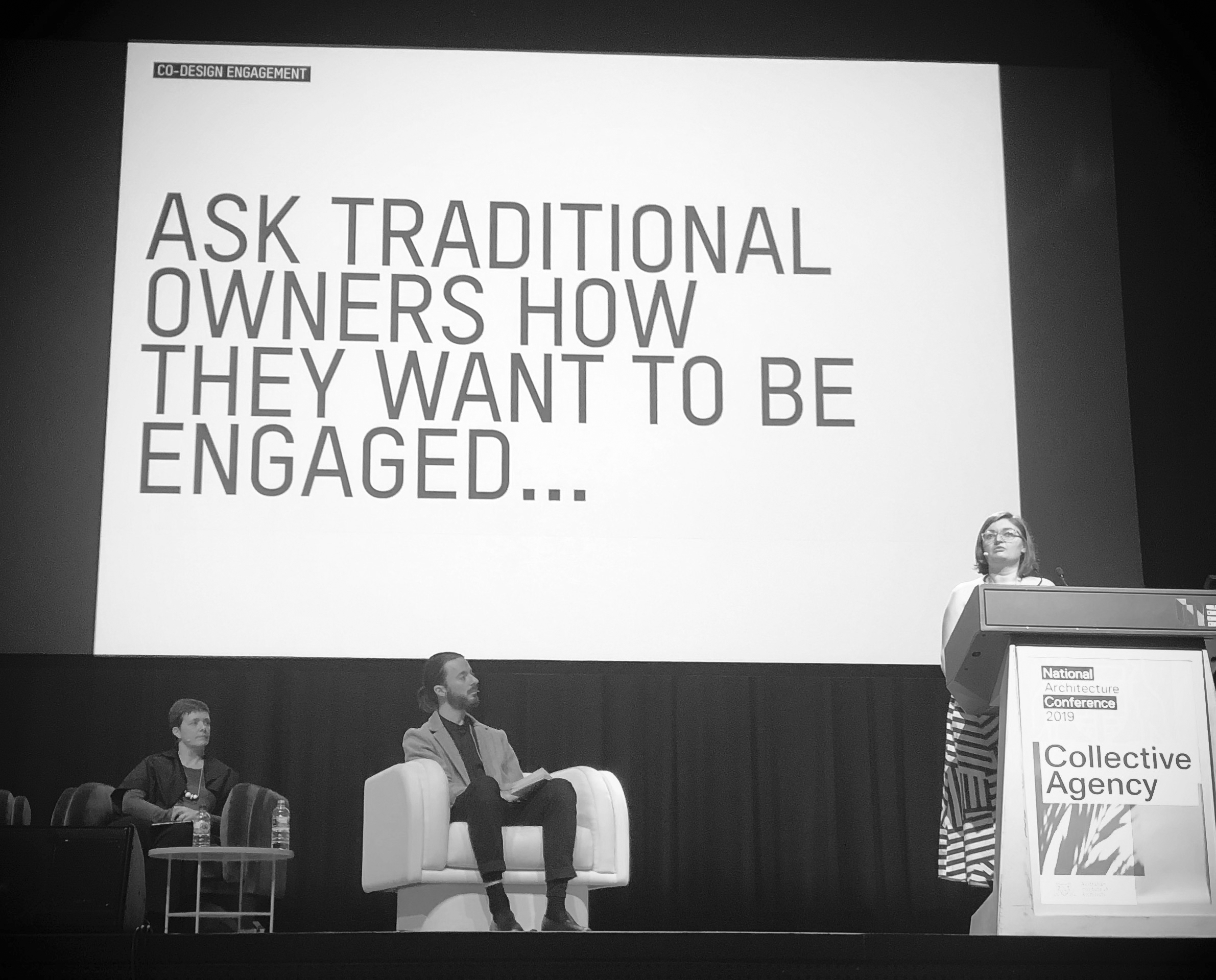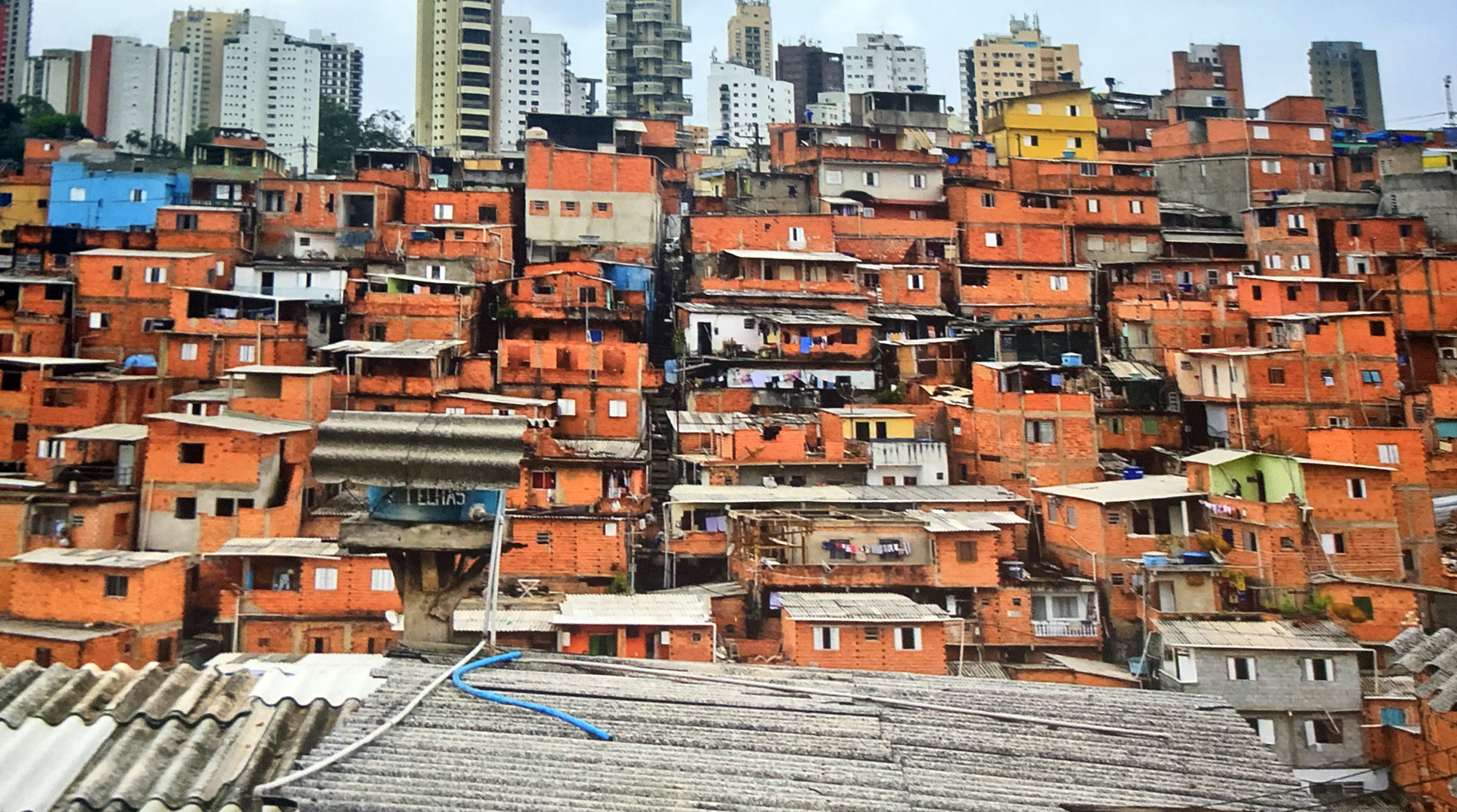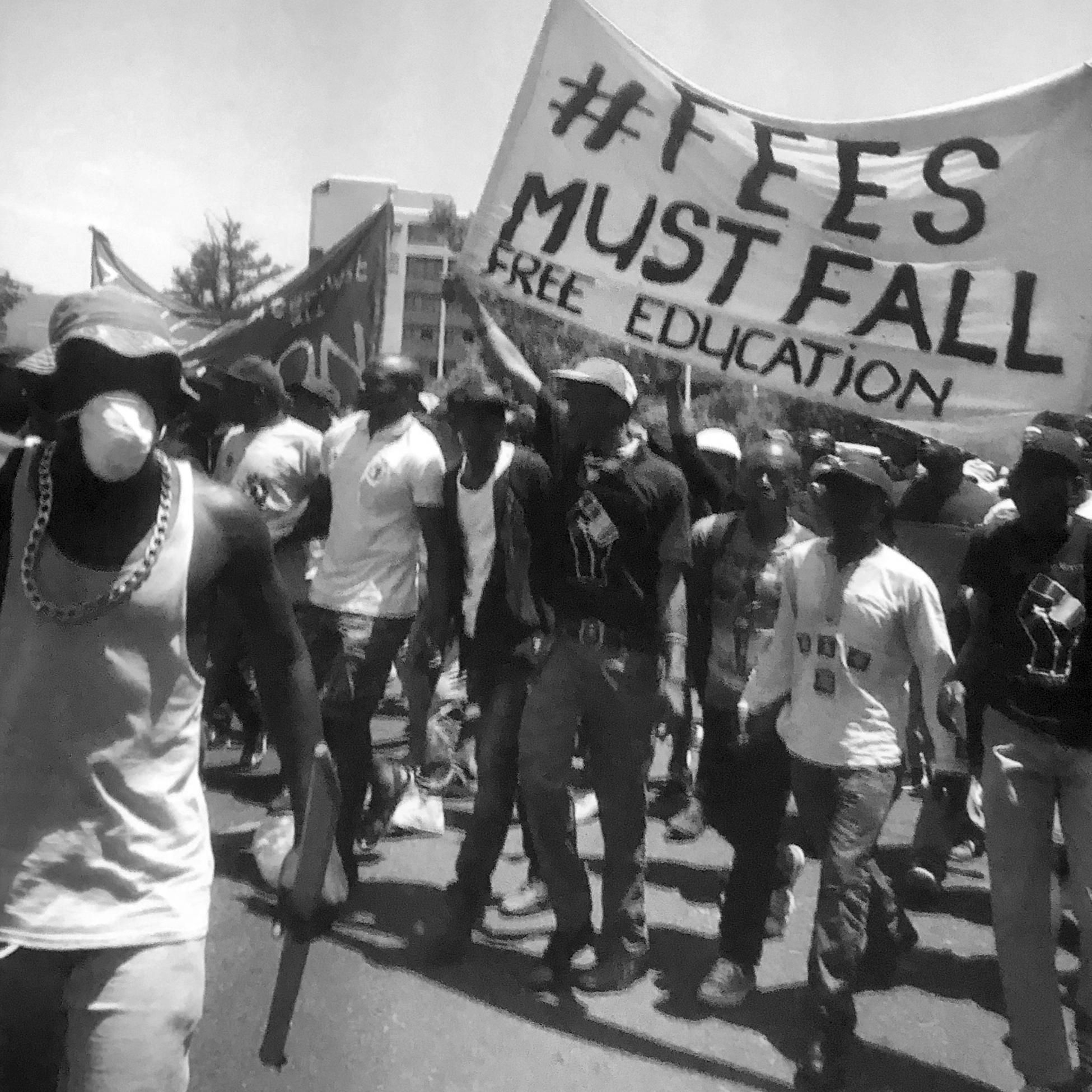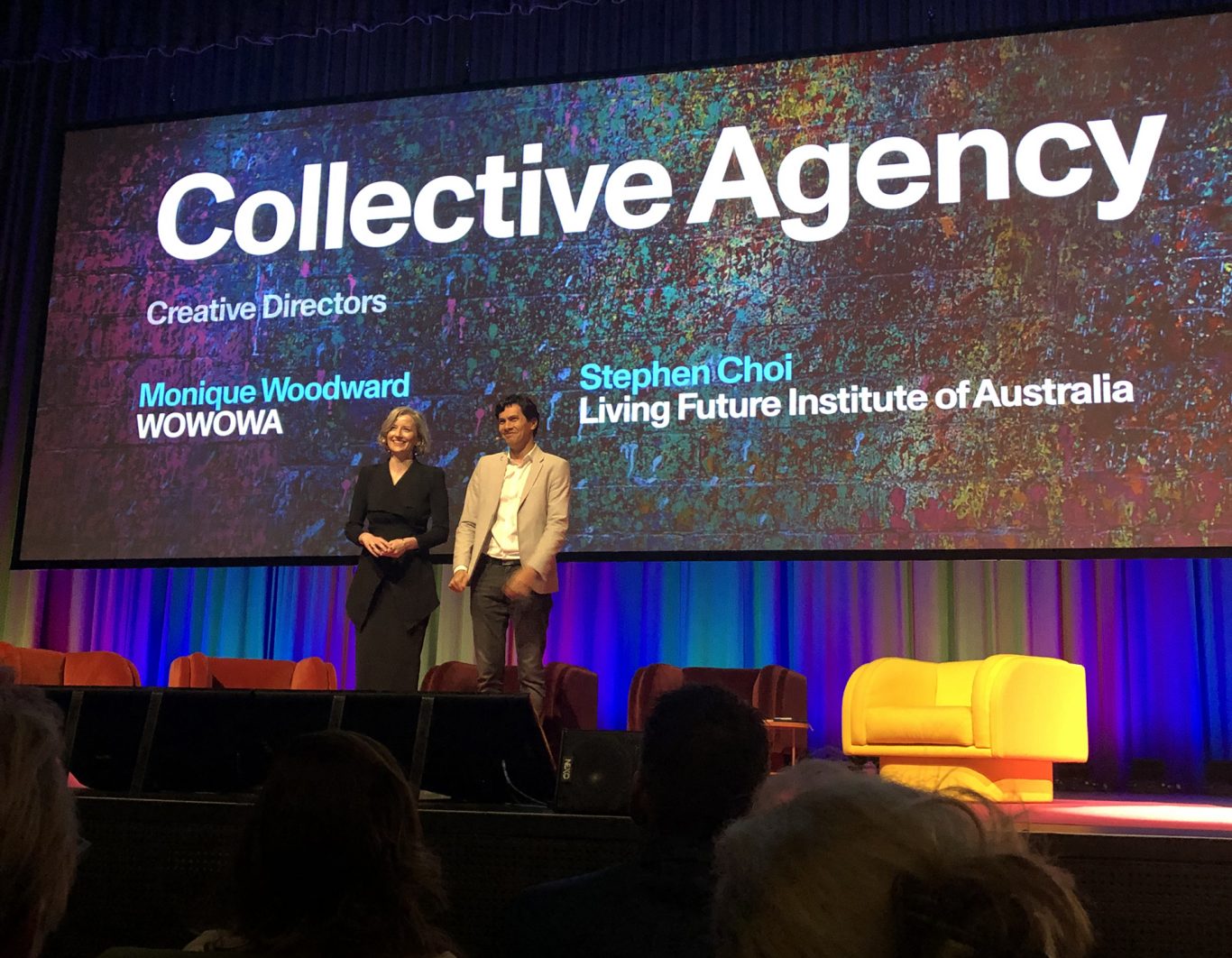The Australian Institute of Architects National Conference has blasted into Melbourne. The conference agenda ‘Collective Agency’ promised to be a radical departure from architecture conferences of the past. The last time the National Conference was in Melbourne was in 2015 for the deep thinking and highly successful theme of Risk. Four years on, it would seem conference creative directors, Monique Woodward and Stephen Choi have embraced risk, to put together a conference of dangerous ideas. Kudos must also go to the Australian Institute of Architects for stepping up to the challenge of a difficult conversation rather than racing for the conservative exit.

Collective Agency.
Collective Agency is about a bigger agenda.
The conference is aimed towards changing architectural practice. It is a form of meta advocacy forcing architects to look at the political and social aspects of humanity against the backdrop of our climate emergency. The promotion of the conference talked a very big game. Advocacy, activism, identity and politics, but perhaps without as much ‘eye candy’ as attendees are used too. As noted by Woodward: “If you want to look at pretty things, turn to Instagram because that’s really not what this conference is about.”
The topic of activism and advocacy is particularly timely given the last few years. In Sydney a massive campaign continues to preserve the Sirius building from government sanctioned vandalism. In Melbourne the Federation Square saga has shown how effective collective action can be in securing better outcomes for the community. Internationally right now we are seeing some of the biggest protests ever in Hong Kong where collective action is seen as the last resort.
So with this bold and ambitious agenda and a string of speakers lined up to talk about activism, advocacy and collective action in the architectural context the next two days promised to be something extraordinary.
“This is not a call to action, it is a response to a call that hasn’t been answered”
Monique Woodward
Session 1 Collective Agency
Julia Cambage (Captain) with Dhakshayini Sooriyakumaran and Marina Otero Verzier
The format for each session was to have a series of speakers introduced by a ‘captain’ of the session. The captain’s role was to generally synthesize and contrast the perspectives of the speakers in relation to the session topic. This role throughout the day was at times quite brief, but helpful in framing the conversation that was to come.
The first speaker, as introduced by session captain and AIA CEO Julia Cambage, was Dhakshayini Sooriyakumaran from the Australasian Centre for Corporate Responsibility. This immediately set the tone of what was to follow. No architectural details, no seductive imagery or architectural sections. Instead a very real discussion about privilege and identity. Sooriyakumaran immediately challenged the audience “If you’re a person of privilege, what will you be sacrificing for the collective?”
For those expecting a masterclass on details, or stories of client negotiation this might have been a surprise. For those operating on a very superficial level it might have left them wondering what this has to do with architecture at all? However if architecture is about making a better world for people, shouldn’t the act of supporting the collective be a fundamental consideration for architects?
“You are the designers of the physical spaces that we inhabit. You can choose to challenge or accept the status quo.”
Dhakshayini Sooriyakumaran
After throwing down this moral challenge, next up was Marina Otero Verzier from Het Nieuwe Instituut in the Netherlands. In her presentation the activist theme continued but with a more direct relationship to the built environment. Otero Verzier made the case that squatters had played a transformational role in the city of Amsterdam and outlined a series of activist projects that supported squatter rights across the Netherlands.
“The right of housing is more important than the right of property”
Marina Otero Verzier
Session 2 New protocols
Captain for this powerhouse session was Andy Fergus from the City of Melbourne. Someone of deep knowledge and intellect, Fergus had a clear focus on extracting actionable ideas from the speakers. In introducing the topic of ‘New Protocols’ Fergus also made a point about the value of architects working within government, both in providing direct design advice, but also in acting as the link between the profession and the government’s ‘apparatus of power’.
First of the speakers for this session was Libby Porter from RMIT University. Once again the challenge to reframe our profession’s traditional thinking was immediate. “Our built environment professions are intrinsic to the forces of colonization” proclaimed Porter, a hard truth that is difficult to deny. Her call to arms was that the profession does their homework to ensure they can be able to respond to this issue, and not just sit in silence.
Next up was Sarah Lynn Rees discussing the absolute basics of designing on country. During this talk it was impossible to not to feel that the systems of professional education have been negligent in preparing our profession for the task at hand. Step 1, know who you are and where you come from. Step 2, know whose country you are on. These questions, seemingly so basic, were never taught at schools or universities, an omission which has left many Australian architects culturally impotent.
As Rees continued, every slide contained critical information on how practices, institutions and media could become more respectful of indigenous culture.
“What does it mean to work on someone else’s country?”
Sarah Lynn Rees

Continuing the theme of new protocols was Laura Harding from Hills Thalis in Sydney. In yet another impassioned and precise presentation, Harding outlined the farcical outcomes that have plagued Sydney, ‘the protocol capital of Australia’. From the damage of the night time ‘lock out’ laws, to the appalling public space outcome at Barangaroo, to the disappointing urban outcome of Green Square, Harding was scathing of how the State Government was botching Sydney.
“Power can be measured in how easily you can avoid protocols that apply to others”
Laura Harding
Final speaker for the session was Olivia Hyde for the NSW Government Architect Office. As a self described architecture bureaucrat, Hyde outlined how the NSW GA office had worked to influence the protocols to achieve better design outcomes. Indeed, until recently there was no overall objective to achieve design quality in the built environment.
Unfortunately this session suffered from having too many ideas in too little time. It could have easily been split into two sessions, each with two speakers, in order to give enough time to explore more detail. All four speakers were exceptional, however Sarah Lynn Rees was perhaps the standout speaker of the day. With such great substance and takeaways from her presentation, it is a shame it had to be so compressed.
Session 3 Human Connectivity
After the Lunch break, the topic of Human Connectivity was introduced by session captain Kerstin Thompson. The idea behind the session was for the ‘Architecture with a capital A’ to emerge and perhaps settle some of discomfort of the more conservative delegates.
Starting this session, with perhaps the most conventional conference presentations of the day, was Poppy Taylor and Mat Hinds from Taylor and Hinds. Elaborating upon the ‘promise of the sheltering condition’ in the Tasmanian context Taylor and Hinds spoke eloquently about three beautifully crafted architectural responses. For the first time of the conference rich architectural materiality and refined detailing took center stage. The connection back to the session theme was via the strong client and user focussed narratives that guided the architecture.
Next up was David Tickle from Hassell discussing architecture at the opposite end of the scale. The ‘Resilient By Design, Bay Area Challenge’ was looking for strategies for San Francisco Bay in California. The response from Hassell was through revitalising and connecting public and green spaces as well as restoring the creek. Whilst in the context of the United States, the emphasis on public open space was seen as to a degree radical, Tickle explained that it wasn’t rocket science, public space makes for more resilient communities. It enables a physical space of retreat as well as a social space for connections. A connected community is more likely to help each other out when faced with a natural disaster or other upheaval. As we continue to move into a more dangerous climate these strategies will need to become far more commonplace.
Just when things were looking to creep further into the conventional, Sol Camacho from Brazil took the stage to paint a picture of architectural practice in Brazil. Whilst the Australian profession can at times feel hard done by, it is clear that architects in Brazil are facing an uphill battle. Camacho painted the picture where architecture has been relegated to a luxury product. Here even the government buildings are typically procured direct from a builder or developer.

Yet despite these hostile conditions Camacho and her practice Raddar have been able to make inroads into creating change. In the narrative presented, the first port of call was in gathering a community around an arts and events space. If architecture is to thrive, a community that values an artistic culture seems like a prerequisite.
Session 4 Change the Conversation.
The final Session for the day was captained by Timothy Moore of Sibling Architecture.
First speaker of the session was Louise Wright and Mauro Baracco of Baracco + Wright Architects. To the backdrop of some mesmerizing videos of scaleless landscapes, Wright redirected the conversation to considerations of the ground plane. In some ways a simple idea, but also a powerful one. The rejection of the concept of the ‘Tabular Rasa’ or blank slate, which has been so pervasive in the modernist era, is something worthy of vigilance.
The final speaker for day was Lesley Lokko from the University of Johannesburg in South Africa. In a powerful presentation punctuated by compelling videos, Lokko returned to the conference themes of equity and identity.
“The most dangerous mistake is not to think of the future at all”
Lesley Lokko

For some of the traditionalists, there is no doubt that they would have been struggling to find the architecture in the architecture conference. But this is a failure to see the wood for the trees. Right now we are looking down the barrel of unprecedented social change, technological change and environmental disaster. Architecture needs to square up to these issues, to be part of the solution, to lead discussions and to help humanity adapt to change. Otherwise we risk irrelevance.
As a closing thought for a thought inspiring day, Lokko reflected that: “Change is possible, it is happening right here and right now.”
This conference is evidence of that. What was promised was a conference like no other. What was delivered was exactly that. Big ideas, bold and challenging discussion simultaneously on the edge and at the center of what architecture is about.
Architecture is for everyone
Click here to continue to day 2 of the 2019 National Architecture Conference.
Contact Us
Feel free to contact us with questions or feedback:
Latest Post
- A crisis of trust February 10, 2020
- The Square and the Park. October 28, 2019
- Fixing The Building Industry – A Wishlist September 12, 2019
- 2019 NATIONAL CONFERENCE DAY 2 June 24, 2019
- 2019 National Conference Day 1 June 22, 2019



Leave a Reply